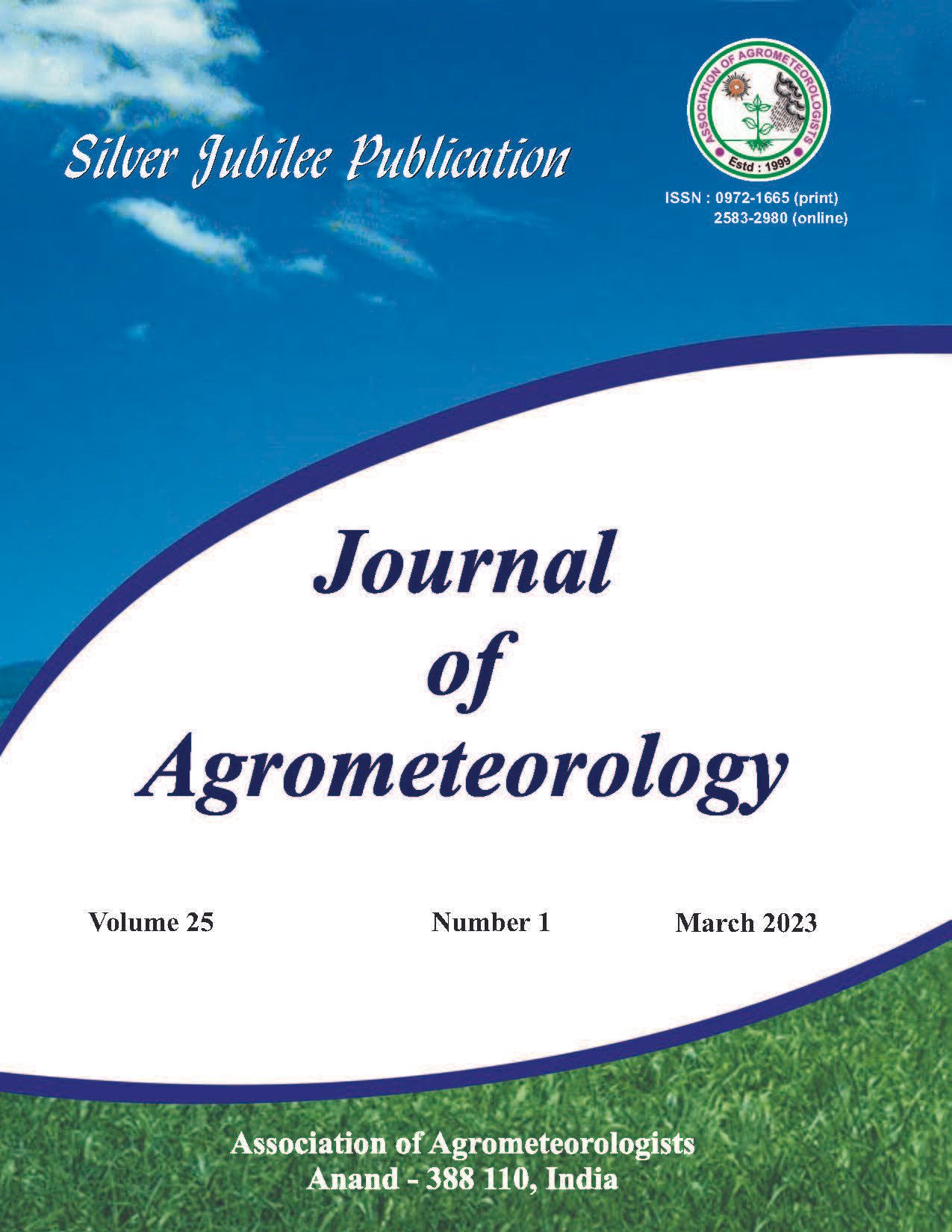Estimation of reference evapotranspiration using artificial neural network models for semi-arid region of Haryana
DOI:
https://doi.org/10.54386/jam.v25i1.1914Keywords:
ANN, Penman-Monteith, Reference evapotranspiration, Semi-arid, Training methodAbstract
The study was conducted to evaluate performance of artificial neural network (ANN) models for estimating reference evapotranspiration (ET0) for semi-arid region of Haryana state. Ten years (2011-2020) daily weather data of maximum and minimum temperature, relative humidity, wind speed and sun shine hours was collected from the meteorological observatory at CCS HAU, Hisar. Multilayer perceptron feed forward back propagation ANN models were evaluated for different training algorithms (10), number of hidden layers (1-3) and number of neurons in hidden layers (1-30). Training algorithms compared in the study were heuristic techniques (GDA, GDX, RP), conjugate gradient (CGF, CGP, CGB, SCG), quasi-Newton (BFG, OSS) and Levenberg-Marquardt (LM). Results were compared against standard FAO Penman-Monteith method. The study revealed that best performance for ANN was found with LM algorithm in single layer of 13 neurons exhibiting RMSE, R, ME and RPD values 0.306, 0.986, 0.976 and 6.63, respectively. ANN models showed good performance in prediction of reference evapotranspiration.
Downloads
Published
How to Cite
Issue
Section
License
Copyright (c) 2023 RAM NARESH, MUKESH KUMAR, SANDEEP KUMAR, KULDEEP SINGH, PARMOD SHARMA

This work is licensed under a Creative Commons Attribution-NonCommercial-ShareAlike 4.0 International License.
This is a human-readable summary of (and not a substitute for) the license. Disclaimer.
You are free to:
Share — copy and redistribute the material in any medium or format
Adapt — remix, transform, and build upon the material
The licensor cannot revoke these freedoms as long as you follow the license terms.
Under the following terms:
Attribution — You must give appropriate credit, provide a link to the license, and indicate if changes were made. You may do so in any reasonable manner, but not in any way that suggests the licensor endorses you or your use.
NonCommercial — You may not use the material for commercial purposes.
ShareAlike — If you remix, transform, or build upon the material, you must distribute your contributions under the same license as the original.
No additional restrictions — You may not apply legal terms or technological measures that legally restrict others from doing anything the license permits.
Notices:
You do not have to comply with the license for elements of the material in the public domain or where your use is permitted by an applicable exception or limitation.
No warranties are given. The license may not give you all of the permissions necessary for your intended use. For example, other rights such as publicity, privacy, or moral rights may limit how you use the material.





